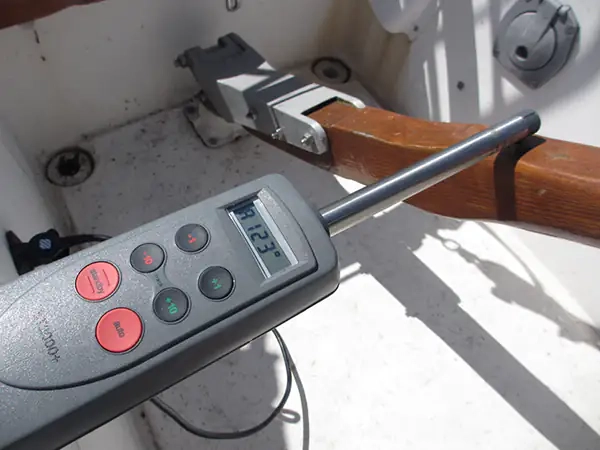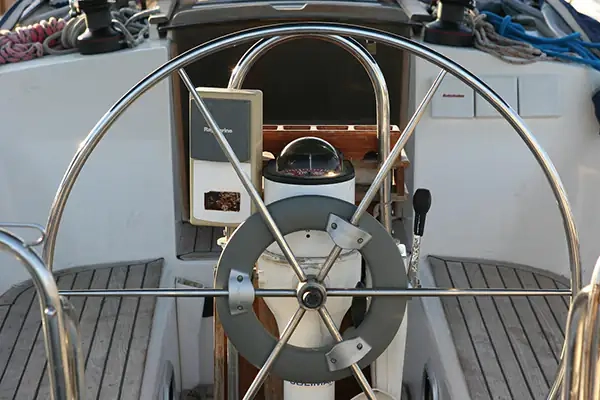You’ve just recently purchased your dream boat. However, during your first trips you notice something peculiar.

When you set your autopilot to steer due west, the boat seems to consistently head WSW. Similarly, when aiming due south, the boat veers SSE. And when asking for a course due north, the resulting heading is NNW.
Question of the day
🔹 What might be causing this navigational discrepancy?
And bonus questions
🔹 What should be done to correct the issue?
🔹 And how is this generally performed?
👉 Reply on one of our social media below. We’ll post the solution right here next Sunday!
Identifying the likely cause of the discrepancy
There are many reasons why an autopilot won’t steer in the desired direction. So let’s first pinpoint what could be going wrong.
Autopilots aboard leisure crafts generally rely on a magnetic sensor. And most often, this “compass” is not a permanent magnet such as the one in the steering compass. Rather it is a “fluxgate magnetometer”, i.e. fixed coils which measure the surrounding magnetic field with the objective of determining the boats orientation relative to the Earth’s own magnetic field.
Given you’re working from a “compass” (albeit an electromagnetic one), the usual corrections should be taken into account. To determine the geographical orientation of the boat, the magnetic measurement should be corrected by the magnetic declination or magnetic variation, i.e. the local difference between magnetic north and true north at your location. The measurement could also be affected by iron or magnetic items nearby onboard the boat, and that correction is called the magnetic deviation. Let’s see if this could be one of the issues.
However, crucially, the nearby magnetic items that are onboard will be generating a magnetic field which will turn along with the boat. As a result, the discrepancy between the set heading and the actual heading will vary depending on the heading itself. This is not the case here, since the reading is consistently off from the real value by the same amount, two points or 1/16th of a full circle, or 22.5°. Although some hidden magnetic material may cause some form of discrepancy, your observations point to another more likely cause.
The fluxgate compass might simply not be calibrated correctly. Because there are no moving parts in the sensor, the raw measurement is translated into a valid reading by setting an electronic offset. This might be inaccurate and that would be consistent with the unvarying noticed discrepancy.

Calibrating the compass
Ultimately, because equipment are all different, calibrating the compass is something best done by following the steps given by the specific device’s manufacturer in the user’s manual.
Generally this involves finding the appropriate menu on the instrument panel. Sometimes it might even require entering a specific calibration mode. Several buttons might need to be pressed simultaneously, and/or for a prolonged period of time. Then, you will need to steer the boat slowly along a predetermined track (generally, either a full circle or a figure eight path over a minute or so) either once or twice. This is best performed on a calm day under power.
If given the opportunity, recalibrating the compass and/or autopilot is something most manufacturers recommend doing monthly. In any case, it should be performed at least yearly, during your first trips on the water, at the onset of boating season.
